Author Archives: Otilia Dragomir
Contact
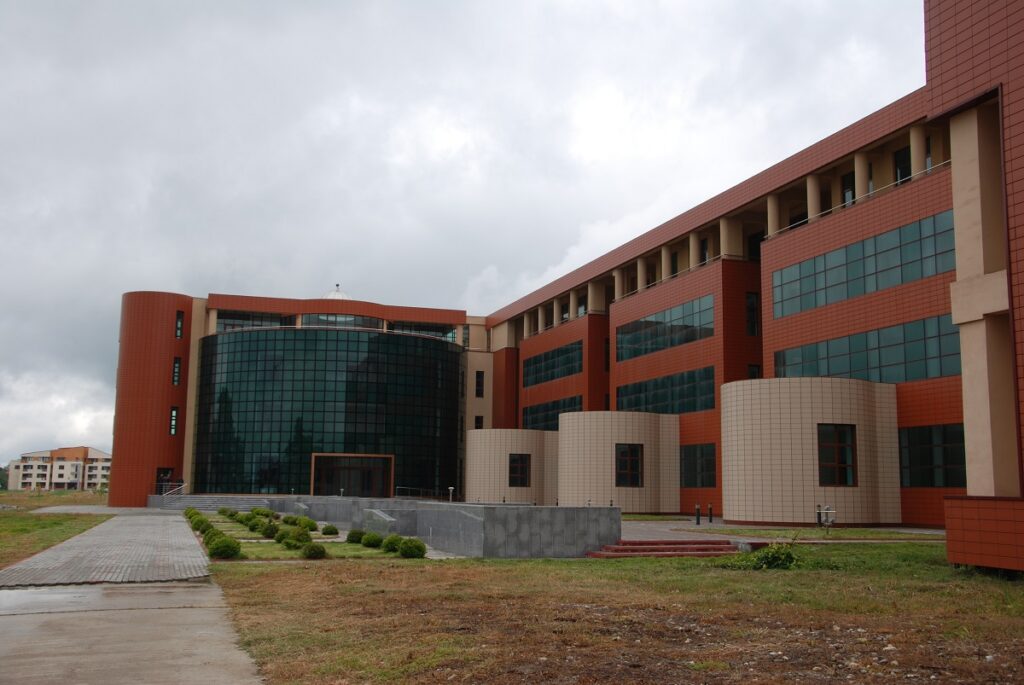
Otilia Elena DRAGOMIR,
Universitatea Valahia din Târgoviște,
Facultatea de Inginerie Electrică, Electronică și Tehnologia Informației,
Departamentul de Automatică, Informatică și Inginerie Electrică
Aleea Sinaia, nr. 13, 130004 Targoviste, Dambovita, Romania
Office Phone/Fax: +40.245.217.683
Home Phone: +40.762.628.521;
E-mail: drg_otilia@yahoo.com, otilia.dragomir@valahia.ro
Home
Competition and Project Information
The team of “Valahia” University from Târgoviște, coordinated by Assoc. Dr. Eng. Otilia Elena Dragomir, teacher and vice-dean of the Faculty of Electrical Engineering, Electronics and Information Technology, participated in the international competition “Xplore 2023 Technology Award for a sustainable world”, organized by Phoenix Contact Germany, under the patronage of the Federal Ministry for Economic Affairs and Climate Action, that promote sustainability through the projects they finance.
Participation in this competition was a natural continuation of the fact that, starting from the academic year 2019-2020, within the Faculty of Electrical Engineering, Electronics and Information Technology – Department of Automation, Informatics and Electrical Engineering, the academic program Phoenix Contact – EduNet operates.
The International Education Network (EduNet) was established in 2007, at the initiative of the Phoenix Contact company, Blomberg, Germany, with the aim of supporting technical universities with hardware and software equipment, necessary for the development of applications for data acquisition, monitoring and management of industrial processes.
The theme of the research-development-innovation project, proposed within the “Smart Industry” section, consists in the implementation on a flexible manufacturing line of an additional disassembly station, for the recovery of parts.
The project was selected for funding, and the Valahia University Team will implement the initiative over the course of a year.
Valahia University Team:
- Otilia Elena Dragomir – Project Coordinator
- Eugenia Mincă – member
- Florin Dragomir – member
- Valentin Gurgu – member
- Octavian Duca – member
- Marius Păun – member
General Data:
Project duration: 12 months
Project budget: 3500 Euros
Activities
20 January 2023 – Design of the handling system for reusable components recovery
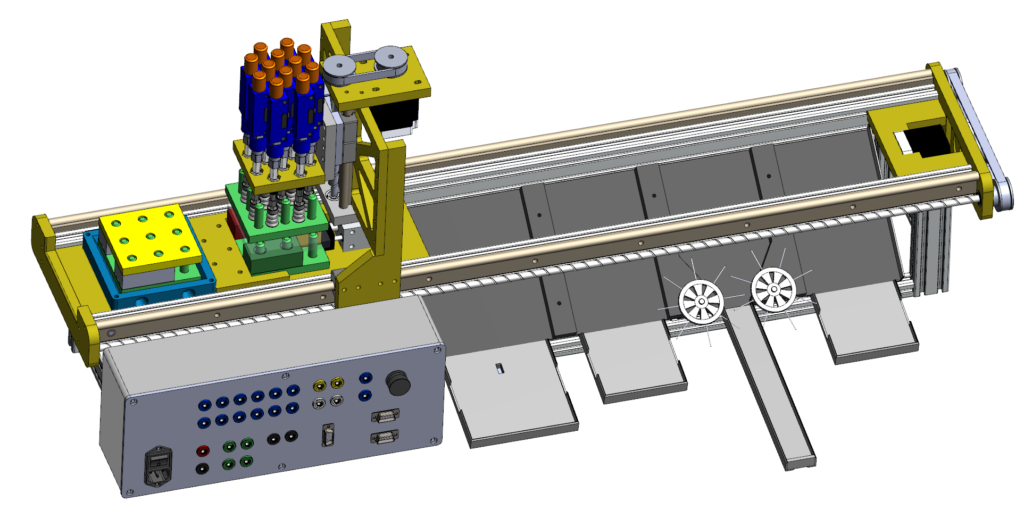
13 January 2023 – Design of the suction matrix with cups for fixing the components
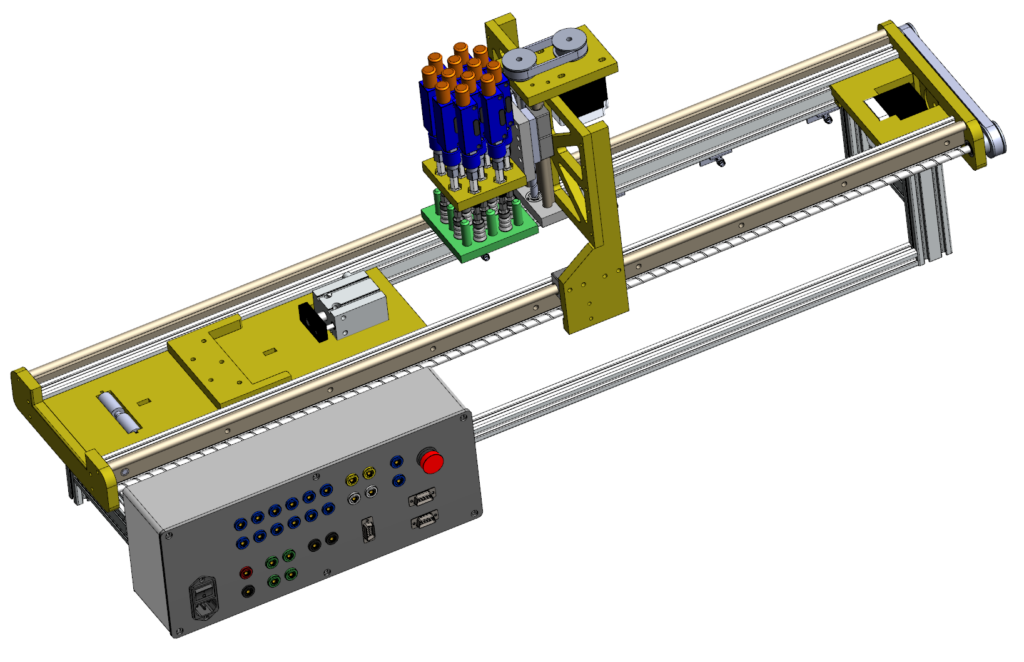
5 January 2023 – Design of the electronic junction box
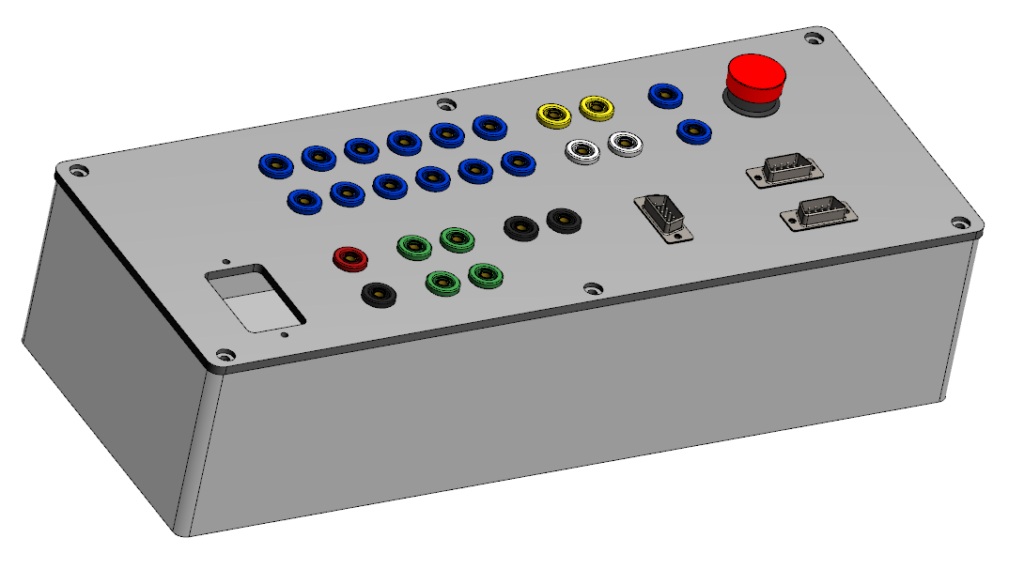
19 December 2022 – Design of the Cartesian robot
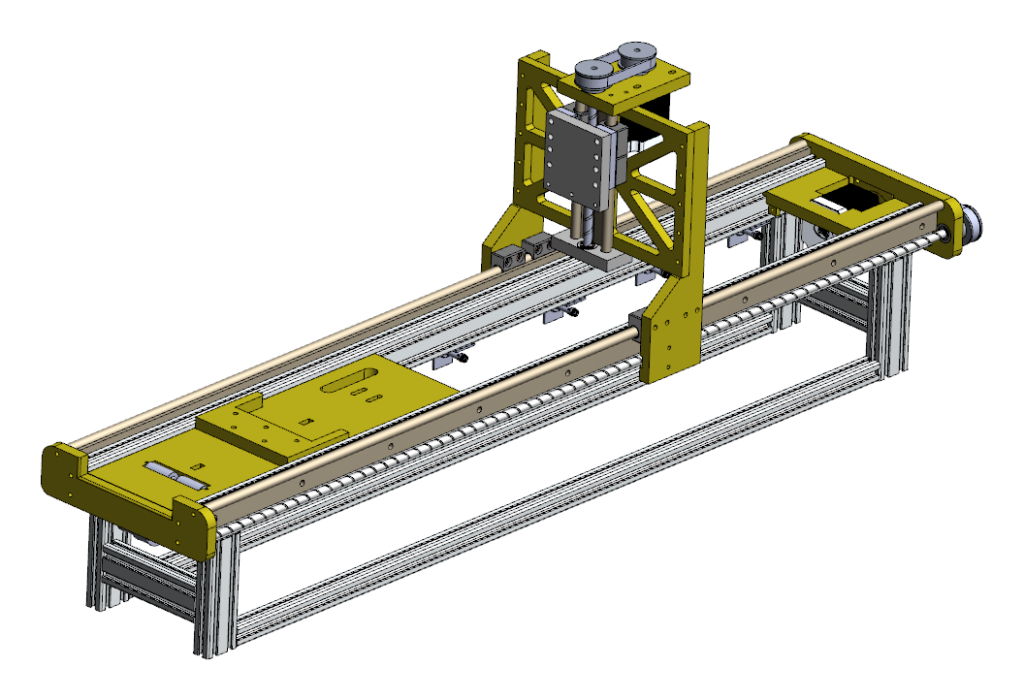
9 December 2022 – Design of the dedicated system for transporting components
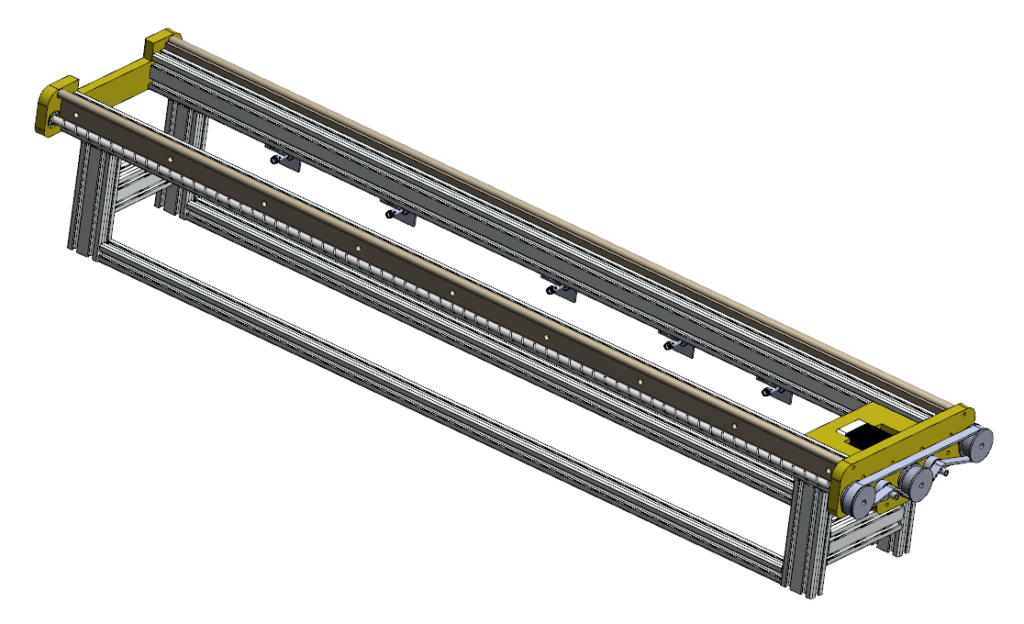
24 November 2022 – Algorithm for positioning / manipulating the Cartesian robot within an FF sequence
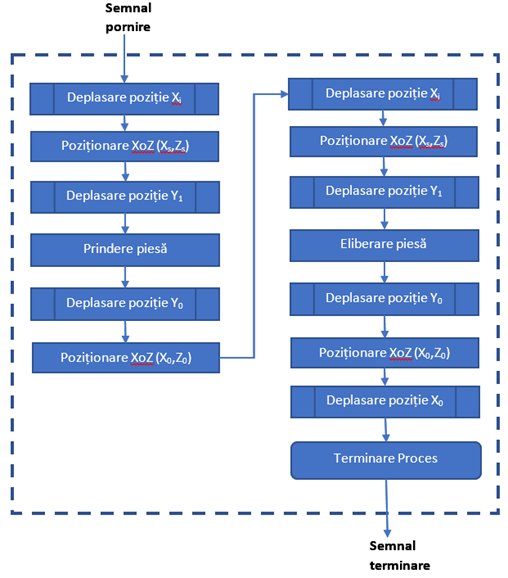
22 November 2022 – Flexible manufacturing control algorithm
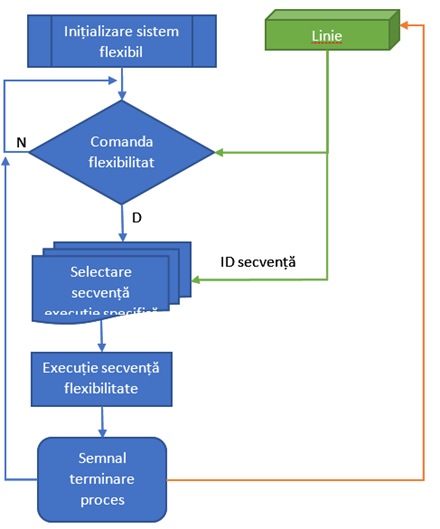
16 November 2022 – Communication between module block scheme
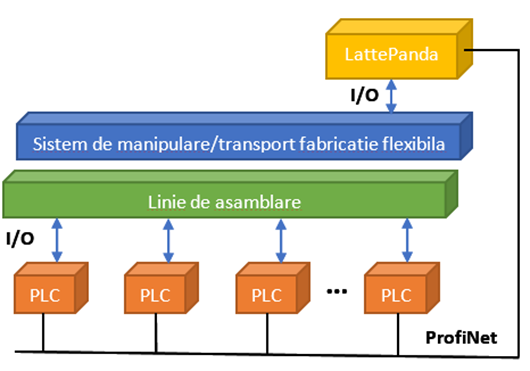
7 November 2022 – The piece
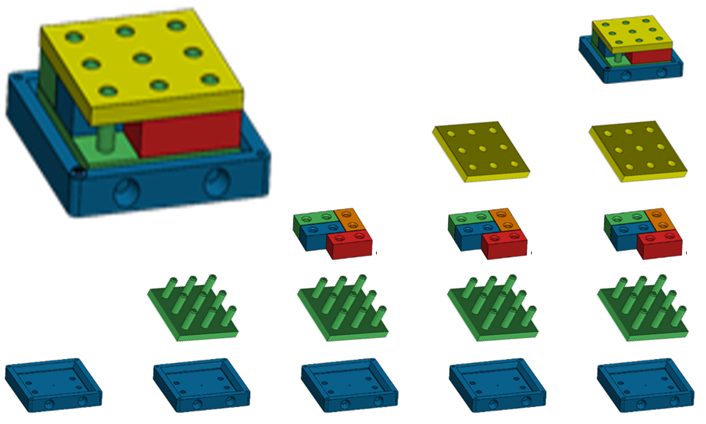
27 October 2022 – Choosing and purchasing products

18 October 2022 – Gantt chart
WP1. Concepts of operations and requirements
The operational and technological requirements will be identified such that both operations and safety of DMS are assured. This methodology refers to the identification of the sub-systems / system as a whole constraints/ existing technologies in the field should be identified so that the selection of the hardware or software components to be made with no risk and with cost effective benefits. In this WP will be also developed the dissemination plan and the exploitation strategy of the project.
Activ. 1.1. Dissemination plan (DP) and exploitation strategy definition.
The exploitation activities will regard the development of an exploitation plan that will detail the final and intermediate exploitation goals, the deadline by which the goals should be achieved, the ways of measuring the project exploitation efforts and impacts.
Activ. 1.2. Define the technological and operational requirements of the developed product.
The requirements of the developed product will be clearly defined. These will include technological, operational and, safety aspects and must consider. and will be used as the basis for the selection of the components.
WP2. Architecture design and realization of prototype
This WP will be design through the integration of the selected hardware components, the models for DMS. The simulation will be done by considering the graphical input/output interface and internal processing blocks. The prototype will be test in laboratory conditions. In addition, a functional system test procedure and a validation procedure will be designed, for laboratory testing, in order to test if it is compliant with specification developed at design stage and to asses if the objectives are achieved.
Activ. 2.1. Design concept model for Disassembly Mechatronic Station (DMS).
Activ. 2.2. Simulation of the model for DMS.
Activ. 2.3. Integration of the model of DMS.
Activ. 2.4. Prototype testing and assessment.
10 October 2022 – Gantt chart
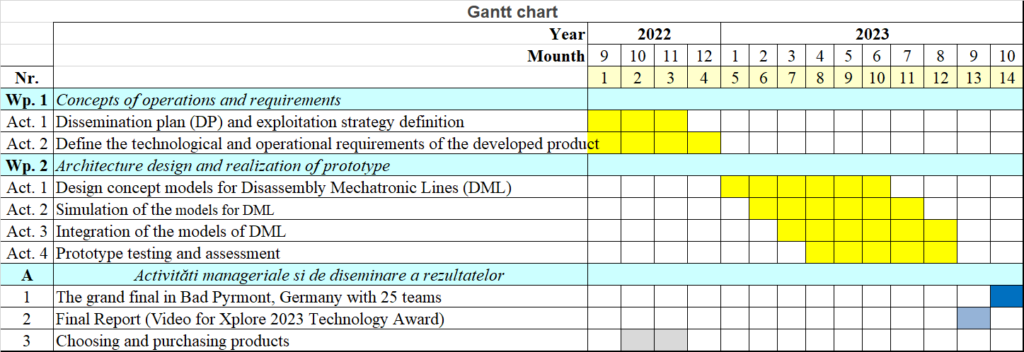
30 September 2022 – Implementation of a disassembly additional station for pieces recovery
The assembly/ disassembly industry is undergoing vast changes with the rapid development of production automation, process control, information technologies and networking. Adaptable assembly/ disassembly systems have been developed to achieve more flexibility to enable adding product variants and scaling productions.
Designed and implentation of the disassembly mechatronic station (DMS) represent the principal object of the proposal.